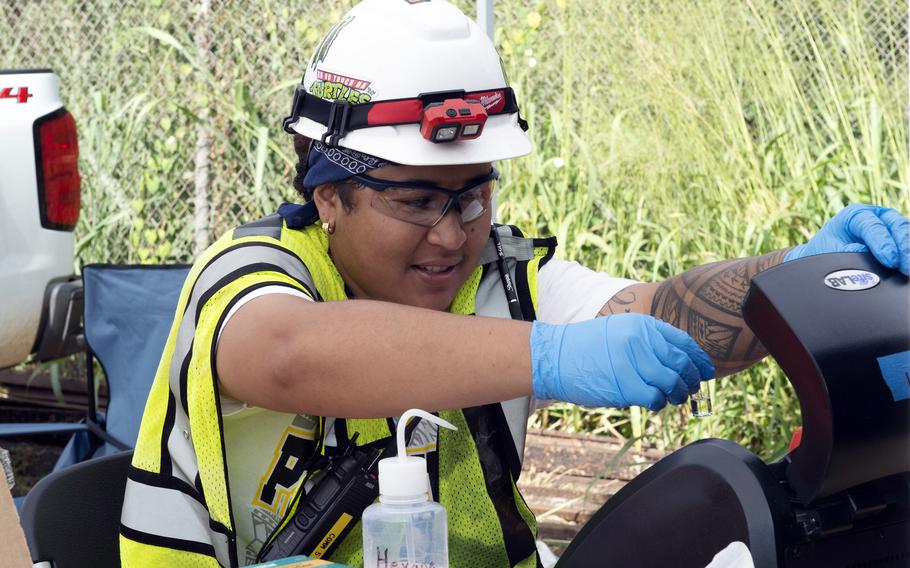
A Navy contractor takes a water sample at the Red Hill well in Aiea, Hawaii, in February 2022. (James Mullen/U.S. Navy)
Individuals exposed to jet-fuel tainted tap water near Pearl Harbor in late 2021 were more likely to experience new migraines and esophagus inflammation than others living nearby but not exposed to the water, according to a Defense Department study released last month.
The study examined conditions reported to Defense Health Agency Public Health following JP-5 jet fuel contamination in November 2021 of the Navy’s water distribution system that supplied military communities on and near Joint Base Pearl Harbor-Hickam. It was completed last summer but not made public for six months.
The fuel was traced to the World War II-era Red Hill underground fuel storage facility, which was ordered emptied and permanently closed four months after the spill.
The study compared 44,373 individuals exposed to the tainted water with 59,499 “DoD-affiliated individuals living on Oahu at the time of the Red Hill fuel release” who were not exposed.
The Red Hill group was more likely to experience new cases of migraines and esophagus inflammation than the comparison group.
In addition, the study analyzed new cases of bloody urine, irritable bowel syndrome, nerve pain called peripheral neuropathy and Raynaud’s syndrome, a condition in which the body’s extremities are deprived of blood. No significant differences were found in those conditions, according to the study.
Immediately after the spill, residents complained of a host of conditions, from headaches and rashes to brain fog and fatigue.
“Notably, there is limited published literature on the health effects of JP-5 ingestion, and currently, no causal link has been established between this exposure and the specific health conditions reported by some Red Hill community members,” states the study, which was conducted by the Navy’s EpiData Center.
The center provides data analysis for public health surveillance for the Navy and Marine Corps.
The study also compared the incidence trend of migraines solely within the Red Hill group by looking at the two-year period before the November 2021 contamination and a two-year period after.
The study found “a higher trend in the monthly number of individuals with health care encounters for migraine following the release event than in the period before the event” in the Red Hill group.
The study had several limitations, including the potential misclassification of conditions in medical records and potential physician bias arising from doctors more closely monitoring the health conditions of the Red Hill group.
Hundreds of individuals who were exposed to the contamination have joined a lawsuit in federal court seeking compensation for physical, emotional and financial damages arising from the spill.
The trial for the first 17 “bellwether” plaintiffs in the civil suit, Feindt vs. United States, took place in May in Hawaii.
U.S. District Court Judge Leslie Kobayashi has not yet issued a decision.
During pretrial motions, Kobayashi disallowed expert testimony about long-term illnesses caused by jet fuel, citing a dearth of medical studies involving human subjects.